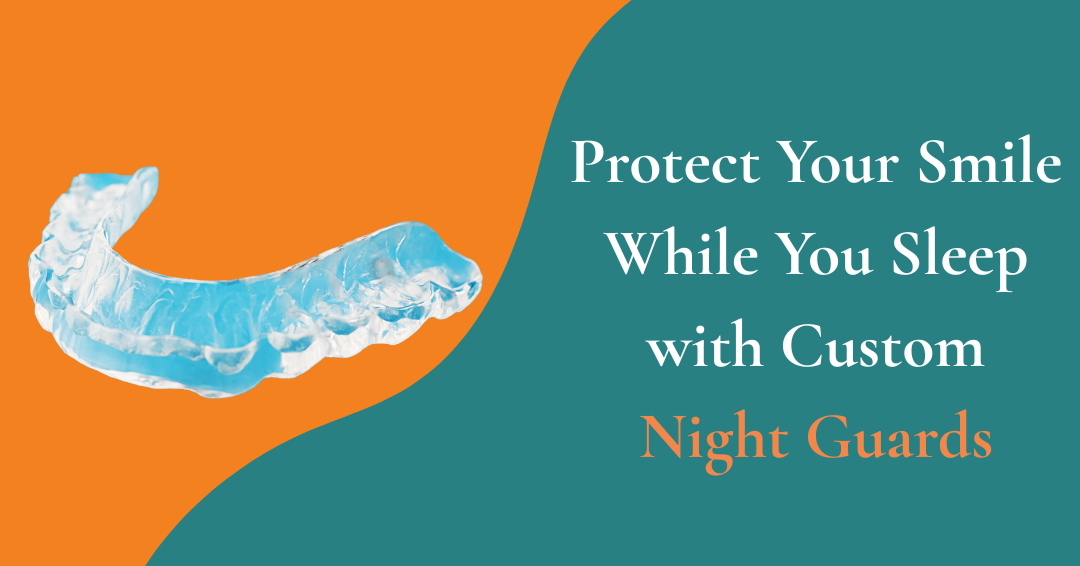Night Guards vs. Retainers: What’s the Difference and Which One Do You Need?
Many people in Los Angeles believe that night guards and retainers serve the same purpose, but they actually serve very different functions. At Textbook Orthodontics, we often see patients confused about which option is right for them. Choosing the correct device for your teeth can affect your comfort, dental health, and the success of your orthodontic treatment.
In this post, we’ll explain the key differences between night guards and retainers, when you might need each, and why sometimes both are recommended. Understanding these distinctions can help you protect your teeth, maintain your smile, and maximise the benefits of your orthodontic care.
Function and Material Differences
Night guards and retainers are both custom-made devices that fit over your teeth, but they serve different purposes.
Night guards are typically made of a durable, flexible material that cushions your teeth and absorbs the force of grinding or clenching during sleep. Their primary function is to protect your enamel and reduce strain on your jaw muscles.
Retainers, on the other hand, are used to maintain teeth in their corrected positions after orthodontic treatment has been completed. Retainers can be made from clear plastic or a combination of wire and acrylic, depending on your needs. While they may look similar to night guards, their purpose is entirely different: keeping your teeth stable after braces or aligner treatment.
By understanding the function and material of each, you can make informed decisions about which device suits your dental health.
When You Need a Night Guard
Night guards are recommended for people who grind or clench their teeth, a condition known as bruxism. This often happens during sleep and can cause:
Worn or chipped teeth
Jaw pain or soreness
Headaches
Increased risk of dental problems
At Textbook Orthodontics, we create custom night guards to fit each patient comfortably and provide adequate protection. Over-the-counter night guards may not fit properly and may not adequately protect your teeth.
Using a night guard can prevent long-term damage and improve sleep comfort. People with TMJ issues or chronic clenching often notice significant relief once they start wearing a night guard consistently.
When You Need a Retainer
Retainers are essential for maintaining the results of orthodontic treatment. After braces or Invisalign, teeth have a natural tendency to shift back toward their original positions. Wearing a retainer as prescribed helps keep your teeth in alignment and ensures that the time and effort spent on treatment are preserved.
Retainers are usually worn full-time initially, then gradually reduced to nighttime use. At Textbook Orthodontics, we provide clear instructions and follow-ups to make sure your retainer use is practical and comfortable. Skipping retainer use can undo the progress achieved through months or years of orthodontic treatment.
Why Both May Be Recommended
In some cases, patients may benefit from using both a night guard and a retainer. For example, if you have braces or aligners and also suffer from teeth grinding, wearing a night guard at night, combined with using a retainer during the day as advised, can protect your teeth and maintain their alignment simultaneously.
Our team at Textbook Orthodontics evaluates each patient individually to determine the best combination. Custom devices ensure a proper fit, comfort, and effectiveness. Wearing the correct device in the right situation prevents damage, discomfort, and future dental complications.
Tips for Comfort and Care
Both night guards and retainers require proper care to keep them clean and in good working condition. Here are a few simple tips:
Clean daily: Rinse your device after use and gently brush it with a soft toothbrush.
Avoid hot water: High temperatures can cause the material to warp.
Store safely: Use a protective case when not in use to prevent damage or loss.
Regular check-ups: Bring your device to your orthodontic appointments to ensure a proper fit.
By following these simple habits, your night guard or retainer will last longer and remain effective.
Final Thoughts
Understanding the difference between night guards and retainers is key to maintaining your smile and protecting your teeth. At Textbook Orthodontics, we guide our patients through every step, providing custom devices and instructions to make treatment comfortable and practical. Wearing the correct device at the right time ensures that your teeth stay healthy, aligned, and protected.
If you’re unsure whether you need a night guard, a retainer, or both, schedule a consultation with our Los Angeles team to determine the best course of action. We can help you choose the right option and provide guidance to make your orthodontic care as smooth as possible.

